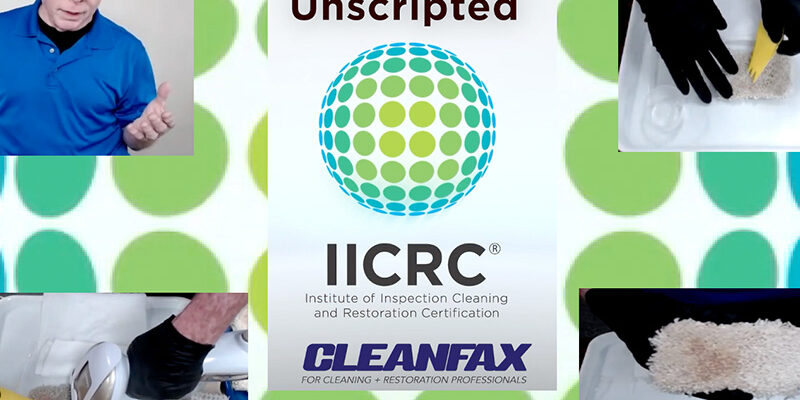The Hunt for Talent

By Eric Sprague
The hottest topic on the planet right now seems to be how to attract and retain talent in your business. Regardless of your industry, this is at the top of every business owner and manager’s mind. I have recently written several articles on the topic, and I always wonder when I am finished if there is really anything left for any of us to say about the matter. It often feels like everything has been said ten different ways by ten different industry experts. I think this bombardment of insights leaves everyone scratching their collective heads as to what they really should do when it comes to staffing in their organization and hiring field technicians.
I was recently asked to moderate an expert panel on this topic at a restoration industry conference. We had several amazing guests on the panel providing amazing ideas to implement. One of the guests was Leighton Healey of KnowHow, a restoration software company. KnowHow had recently written a book based on the results of a restoration industry survey called Why Workers Quit. There was a ton of data in the book which I think is applicable to any home service-based business when it comes to staffing issues. The book really highlighted a few things that most of us are not doing well, and I think it would be worth discussing here to help all of us better understand what we can implement in our companies to get great people and keep them around.
For the purposes of this article, I am going to stick to strictly hiring field technicians for the data and strategies. This is the area where I see the most pain from my consulting practice clients, and the area that generally experiences the most turnover.
Attract and retain field technicians from onboarding and beyond
Knowing where your next field workers come from is of key importance to better understand how to get more people to your front door. According to the book, 59% of all new field workers come from a referral from an existing employee. I know that to be true from my own cleaning and restoration company. We tended to get most of our new team members from our existing crew. This makes it imperative that you have a great culture at your company. To succeed in winning the war for talent, you must have a great place to work that values your team and places a high degree of emphasis on making sure your field technicians feel appreciated and happy at work. For your efforts you will be rewarded for years to come with a steady stream of new applicants willing to work for your company.
Once you get someone to your company and they agree to work for you, it is a must to have a smooth and well-planned-out hiring and onboarding process. The honeymoon period of a new employee is a make-it or break-it moment for most companies. If you and your team do it well and have a great training and onboarding process in place, the new team member will realize they have made the right choice as to which place to work for.
If you make a great first impression with your new employee, they will feel good about their choice and be more excited to work with you. Onboarding is routinely poor at most home service companies. For many of us, it was a boss telling us to get in a van with Joe, the cranky old tech, and “watch” him until we got our own van. Then, Joe would harass us, tell us to just shut up and get out of the way until an appropriate number of days had passed, and then they would finally tell us we are on our own now.
That’s how I was onboarded when I entered the industry, and I am sure many of you reading can relate as well. The problem is, once I became an owner, I was onboarding my new staff members with same horrible process I endured as a new tech. Do yourself a favor, spend some time and create a proper onboarding experience for your new employees so they stick around longer.
Respecting equity in the industry for tech retention
Gender changes are also a big trend in hiring field technicians. In the restoration industry, only 5% of technicians over the age of 30 are female. However, for technicians below the age of 30, over 35% of them are women. That is a fundamental shift in the workforce dynamic, and I am sure if it is happening for restoration techs, it is happening in all home services industries.
Focusing on hiring female technicians could be a great separator for many companies. In fact, having female technicians is a very good fit in the cleaning and restoration industry. Many female clients would prefer to have another woman working in their home, and it may make them feel safer than a male technician in their home as well. Women also tend to be nurturing, detail oriented, and have a strong skillset for making and keeping clients happy. So, start putting your thinking cap on to market your business to potential female technicians, it could be a game changer.
Cashing in on human nature: Great techs respect great techs
Last is the people issue. There is an old saying that goes, “People don’t quit companies, people quit people.” The data in Why Workers Quit certainly seems to corroborate that saying. The top response in the survey as to why field workers leave their companies is bad management.
It has been my experience in our industry that the most common path for owners and managers comes from being a technician first. That was also my experience. I found a trade I was good at and figured I could start a business doing it. The issue with that often starts to become more noticeable as the company grows. If the owner or manager got their job because they were good at the technical parts of the job, it does not mean they are well-trained or well-suited to lead and manage others.
For a company to thrive, the owners and managers need to get training in how to lead, good soft skills, and how to build and maintain a safe and stable work environment. I had to learn how to change my mindset regarding this. As my service company grew, I had high turnover and many disengaged staffers. It was not until I realized I was the problem and sought training to rectify my leadership and management style that employees stayed longer and did a much better job. So, especially in today’s market for talent, I feel it is imperative for the management team to be engaged in ongoing training to make sure they are creating an environment people want to work within.
Tech retention and satisfaction all depends on data
In summary, I don’t think there is really anything new under the sun related to attracting and retaining talent. However, if we use the data that is available to us, we can form a plan to maximize our ability to compete for talent.
As an action plan, start by first making sure you have a cool place to work that people enjoy coming to. Make sure your culture is on point and that you are always investing in the team and its mission. If nearly 60% of new field employees come from current techs, you better make sure they are happy at work.
Second, once you get someone to agree to join you, have a structured onboarding system for them to feel like they know what they are doing. People want to go to work and feel like they are winning the day. If they do not understand what winning is, they will look elsewhere.
Third, females are increasingly joining our ranks as technicians. To intentionally attract and accommodate female team members can be a huge boon to your hiring of new talent.
Last, make sure your management team is properly trained to keep your team happy and engaged. All the efforts in the world to attract talent will do you no good if the owner and managers run them out of town.
All of this is simple, but none of it is easy. I speak from personal experience on this matter. The problem is, there is no alternative. It is becoming very apparent that the companies that do the best at these concepts will thrive moving forward because they are investing in what workers actually want. The companies that shrug it off and just complain that nobody wants to work anymore will likely perish. The evidence is here, now the ball is in your court.
Eric Sprague, The Tech Whisperer, has more than 25 years of managing field technicians in the home services industry. Sprague was the longtime owner of a cleaning and restoration company. After selling his service business in 2018, he has been the co-owner and director of education at Super Tech University and is co-host of the Blue Collar Nation Podcast.












